Featured Articles
Devon Alexander & Randall Bailey Discuss Sept. 8 Bout

 Marcos Maidana couldn't solve the slick boxing Devon Alexander (left). Could Randall Bailey's game-changing right do what Maidana couldn't?
Marcos Maidana couldn't solve the slick boxing Devon Alexander (left). Could Randall Bailey's game-changing right do what Maidana couldn't?
Devon Alexander and Randall Bailey, the IBF welterweight champion, took part in a conference call to hype their Sept. 8 fight, which will run on Showtime and unfold at the Hard Rock in Las Vegas.
David Itskowitch of Golden Boy presided over the call. He introduced the ex super lightweight champion Alexander, the St. Louis hitter who is coming off a win over Marcos Maidana. That was his first scrap at 147 pounds. The 23-1 (13 KOs) pug said he was excited for the Sept. 8 bout, and looks forward to becoming a three time champion.
Lou DiBella, the promoter of Bailey (43-7 with 37 KOs), said that his guy has legendary power. He said Alexander will have to be on the lookout for a finishing blow from round one through twelve. He introduced “the biggest puncher in boxing, the most feared puncher in boxing,” Bailey. Bailey, a Floridian, said he “can't wait for the fight,” one that he wanted when he campaigned at 140 pounds.
Alexander, a 25 year-old southpaw, said that making 140 was too tough, and losing muscle took away from his effectiveness. He said the Bailey fight will bring out the best in him, while noting that he does get that Bailey has one-punch power. Alexander's lone loss came to Timothy Bradley (via TD10) back in January 2011. They have a common opponent, in Juan Urango, and Bailey was stopped in round 11 back in 2009, while Alexander stopped Urango eight months later, via TKO8.
Bailey was asked if he might be able to create an opportunity earlier than he did in his last fight, when he dropped and stopped Philly's Mike Jones in round 11, back in June. Bailey, who won a vacated crown that night, said he will press Alexander if he runs, and bomb with him if he comes at him. He said he knows he can cut off the ring on Devon. “When I cut off the ring, he's gonna have to fight,” Bailey, age 37, insisted.
Bailey said he doesn't feel old, because he's always training and doesn't abuse his body. Asked about his power, he said he was born with it, and has been throwing it since he was about 15 years old. He said he will land it, and it's just a matter of how you handle it when you get hit with it. The one-punch KO artist is a rarity these days and Bailey couldn't think of anyone else who has similar one-punch power.
Alexander said he will indeed tweak his gameplan because Bailey has game-changing power. Alexander said he will follow his gameplan, set up with trainer Kevin Cunningham, and that will bring him to the win. “Try to land it,” he said of Bailey's promise to drop a hammer on him.
Mike Jones, a caller noted, was winning the June scrap with Bailey until he dropped his bombs. “I knew I was behind,” Bailey said. “He gave me half a door opened, and that's all I needed.” He said Alexander gets hit with right hands “constantly,” so it doesn't matter if Devon has a speed edge over Jones.
Will he just outbox Bailey? No, Alexander said, that's not all he's got, implying that he won't move his way to the win, that he will do some fighting as well. The fight isn't simply a simple boxer vs puncher bout, he insidted; Alexander said he's not going “to just run around,” that he will try and hurt Bailey. The Marcos Maidana win showed off his power, he said, and he watched that bout six or seven times, to learn from it. He said re-watching the scrap told him he could step to Maidana, and set down on his punches more. Bailey said the Alexander-Maidana fight showed him that Alexander holds a lot. He said he won't go for that, and will be punching when and if Alexander is holding.
Cunningham was asked about Jones and his dangerous right hand. The right is all he has, Cunningham said. “If he throws the right hand he's going to pay for it,” the trainer said.
Alexander said Maidana is a brawler type, while Bailey sets things up in a more thoughtful fashion. He said he is excited to make his Las Vegas debut while Bailey is happy he's not fighting on Alexanders' home turf.
Alexander said the winner of this fight could be in a position to fight Floyd Mayweather.
Alexander was asked about Pacquiao-Bradley. He said he thought Pacman did more, but did slow down later in the bout. “I had Pacquiao up slightly,” he said.
What about a Bradley rematch? He said he would look at that after this bout. Asked about the clash of heads and stoppage in the Bradley fight, he said looking back that it was a learning experience. The ref stopped that fight after consulting with the ring doc, who said he was afraid there was nerve damage in Alexander's left eye.
My take: I see Alexander, a super-smart boxer, sticking to the gameplan, and winning every round. He will not pull a Mike Jones, and let his attention drift. Alexander will beat Bailey, via wide UD. Your thoughts, TSS Universe?
Featured Articles
Sam Goodman and Eccentric Harry Garside Score Wins on a Wednesday Card in Sydney
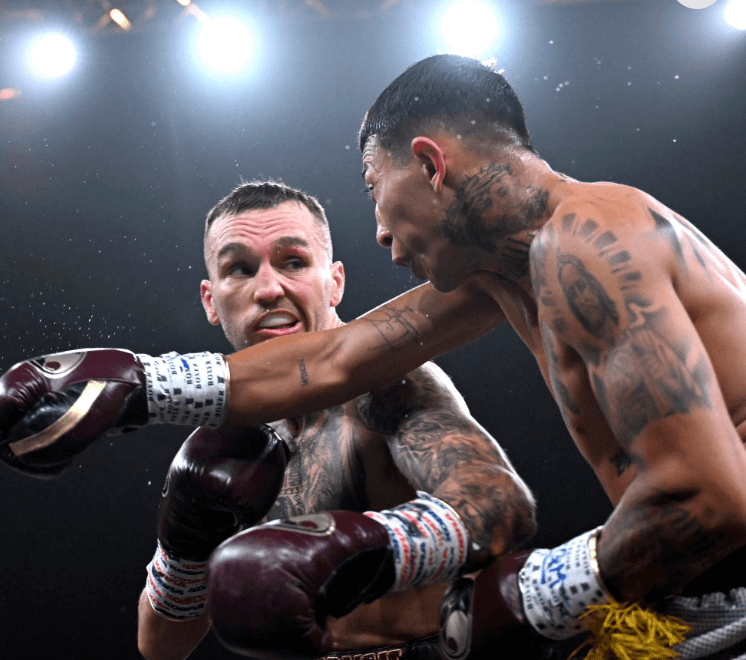
Australian junior featherweight Sam Goodman, ranked #1 by the IBF and #2 by the WBO, returned to the ring today in Sydney, NSW, and advanced his record to 20-0 (8) with a unanimous 10-round decision over Mexican import Cesar Vaca (19-2). This was Goodman’s first fight since July of last year. In the interim, he twice lost out on lucrative dates with Japanese superstar Naoya Inoue. Both fell out because of cuts that Goodman suffered in sparring.
Goodman was cut again today and in two places – below his left eye in the eighth and above his right eye in the ninth, the latter the result of an accidental head butt – but by then he had the bout firmly in control, albeit the match wasn’t quite as one-sided as the scores (100-90, 99-91, 99-92) suggested. Vaca, from Guadalajara, was making his first start outside his native country.
Goodman, whose signature win was a split decision over the previously undefeated American fighter Ra’eese Aleem, is handled by the Rose brothers — George, Trent, and Matt — who also handle the Tszyu brothers, Tim and Nikita, and two-time Olympian (and 2021 bronze medalist) Harry Garside who appeared in the semi-wind-up.
Harry Garside

Harry Garside
A junior welterweight from a suburb of Melbourne, Garside, 27, is an interesting character. A plumber by trade who has studied ballet, he occasionally shows up at formal gatherings wearing a dress.
Garside improved to 4-0 (3 KOs) as a pro when the referee stopped his contest with countryman Charlie Bell after five frames, deciding that Bell had taken enough punishment. It was a controversial call although Garside — who fought the last four rounds with a cut over his left eye from a clash of heads in the opening frame – was comfortably ahead on the cards.
Heavyweights
In a slobberknocker being hailed as a shoo-in for the Australian domestic Fight of the Year, 34-year-old bruisers Stevan Ivic and Toese Vousiutu took turns battering each other for 10 brutal rounds. It was a miracle that both were still standing at the final bell. A Brisbane firefighter recognized as the heavyweight champion of Australia, Ivic (7-0-1, 2 KOs) prevailed on scores of 96-94 and 96-93 twice. Melbourne’s Vousiuto falls to 8-2.
Tim Tsyzu.
The oddsmakers have installed Tim Tszyu a small favorite (minus-135ish) to avenge his loss to Sebastian Fundora when they tangle on Sunday, July 20, at the MGM Grand in Las Vegas.
Their first meeting took place in this same ring on March 30 of last year. Fundora, subbing for Keith Thurman, saddled Tszyu with his first defeat, taking away the Aussie’s WBO 154-pound world title while adding the vacant WBC belt to his dossier. The verdict was split but fair. Tszyu fought the last 11 rounds with a deep cut on his hairline that bled profusely, the result of an errant elbow.
Since that encounter, Tszyu was demolished in three rounds by Bakhram Murtazaliev in Orlando and rebounded with a fourth-round stoppage of Joey Spencer in Newcastle, NSW. Fundora has been to post one time, successfully defending his belts with a dominant fourth-round stoppage of Chordale Booker.
To comment on this story in the Fight Forum CLICK HERE
Featured Articles
Thomas Hauser’s Literary Notes: Johnny Greaves Tells a Sad Tale
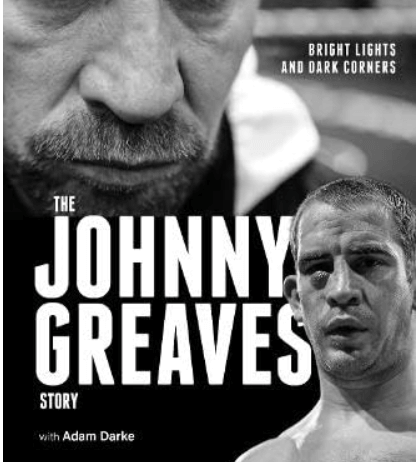
Johnny Greaves was a professional loser. He had one hundred professional fights between 2007 and 2013, lost 96 of them, scored one knockout, and was stopped short of the distance twelve times. There was no subtlety in how his role was explained to him: “Look, Johnny; professional boxing works two ways. You’re either a ticket-seller and make money for the promoter, in which case you get to win fights. If you don’t sell tickets but can look after yourself a bit, you become an opponent and you fight to lose.”
By losing, he could make upwards of one thousand pounds for a night‘s work.
Greaves grew up with an alcoholic father who beat his children and wife. Johnny learned how to survive the beatings, which is what his career as a fighter would become. He was a scared, angry, often violent child who was expelled from school and found solace in alcohol and drugs.
The fighters Greaves lost to in the pros ran the gamut from inept local favorites to future champions Liam Walsh, Anthony Crolla, Lee Selby, Gavin Rees, and Jack Catterall. Alcohol and drugs remained constants in his life. He fought after drinking, smoking weed, and snorting cocaine on the night before – and sometimes on the day of – a fight. On multiple occasions, he came close to committing suicide. His goal in boxing ultimately became to have one hundred professional fights.
On rare occasions, two professional losers – “journeymen,” they’re called in The UK – are matched against each other. That was how Greaves got three of the four wins on his ledger. On September 29, 2013, he fought the one hundredth and final fight of his career against Dan Carr in London’s famed York Hall. Carr had a 2-42-2 ring record and would finish his career with three wins in ninety outings. Greaves-Carr was a fight that Johnny could win. He emerged triumphant on a four-round decision.
The Johnny Greaves Story, told by Greaves with the help of Adam Darke (Pitch Publishing) tells the whole sordid tale. Some of Greaves’s thoughts follow:
* “We all knew why we were there, and it wasn’t to win. The home fighters were the guys who had sold all the tickets and were deemed to have some talent. We were the scum. We knew our role. Give some young prospect a bit of a workout, keep out of the way of any big shots, lose on points but take home a wedge of cash, and fight again next week.”
* “If you fought too hard and won, then you wouldn’t get booked for any more shows. If you swung for the trees and got cut or knocked out, then you couldn’t fight for another 28 days. So what were you supposed to do? The answer was to LOOK like you were trying to win but be clever in the process. Slip and move, feint, throw little shots that were rangefinders, hold on, waste time. There was an art to this game, and I was quickly learning what a cynical business it was.”
* “The unknown for the journeyman was always how good your opponent might be. He could be a future world champion. Or he might be some hyped-up nightclub bouncer with a big following who was making lots of money for the promoter.”
* “No matter how well I fought, I wasn’t going to be getting any decisions. These fights weren’t scored fairly. The referees and judges understood who the paymasters were and they played the game. What was the point of having a go and being the best version of you if nobody was going to recognize or reward it?”
* “When I first stepped into the professional arena, I believed I was tough. believed that nobody could stop me. But fight by fight, those ideas were being challenged and broken down. Once you know that you can be hurt, dropped and knocked out, you’re never quite the same fighter.”
* “I had started off with a dream, an idea of what boxing was and what it would do for me. It was going to be a place where I could prove my toughness. A place that I could escape to and be someone else for a while. For a while, boxing was that place. But it wore me down to the point that I stopped caring. I’d grown sick and tired of it all. I wished that I could feel pride at what I’d achieved. But most of the time, I just felt like a loser.”
* “The fights were getting much more difficult, the damage to my body and my psyche taking longer and longer to repair after each defeat. I was putting myself in more and more danger with each passing fight. I was getting hurt more often and stopped more regularly. Even with the 28-day [suspensions], I didn’t have time to heal. I was staggering from one fight to the next and picking up more injuries along the way.”
* “I was losing my toughness and resilience. When that’s all you’ve ever had, it’s a hard thing to accept. Drink and drugs had always been present in my life. But now they became a regular part of my pre-fight preparation. It helped to shut out the fear and quieted the thoughts and worries that I shouldn’t be doing this anymore.”
* “My body was broken. My hands were constantly sore with blisters and cuts. I had early arthritis in my hip and my teeth were a mess. I looked an absolute state and inside I felt worse. But I couldn’t stop fighting yet. Not before the 100.”
* “I had abused myself time after time and stood in front of better men, taking a beating when I could have been sensible and covered up. At the start, I was rarely dropped or stopped. Now it was becoming a regular part of the game. Most of the guys I was facing were a lot better than me. This was mainly about survival.”
* “Was my brain f***ed from taking too many punches? I knew it was, to be honest. I could feel my speech changing and memory going. I was mentally unwell and shouldn’t have been fighting but the promoters didn’t care. Johnny Greaves was still a good booking. Maybe an even better one now that he might get knocked out.”
* “Nobody gave a f*** about me and whether I lived or died. I didn’t care about that much either. But the thought of being humiliated, knocked out in front of all those people; that was worse than the thought of dying. The idea of being exposed for what I was – a nobody.”
* “I was a miserable bastard in real life. A depressive downbeat mouthy little f***er. Everything I’ve done has been to mask the feeling that I’m worthless. That I have no value. The drinks and the drugs just helped me to forget that for a while. I still frighten myself a lot. My thoughts scare me. Do I really want to be here for the next thirty or forty years? I don’t know. If suicide wasn’t so impactful on people around you, I would have taken that leap. I don’t enjoy life and never have.”
So . . . Any questions?
****
Steve Albert was Showtime’s blow-by-blow commentator for two decades. But his reach extended far beyond boxing.
Albert’s sojourn through professional sports began in high school when he was a ball boy for the New York Knicks. Over the years, he was behind the microphone for more than a dozen teams in eleven leagues including four NBA franchises.
Putting the length of that trajectory in perspective . . . As a ballboy, Steve handed bottles of water and towels to a Knicks back-up forward named Phil Jackson. Later, they worked together as commentators for the New Jersey Nets. Then Steve provided the soundtrack for some of Jackson’s triumphs when he won eleven NBA championships as head coach of the Chicago Bulls and Los Angeles Lakers.
It’s also a matter of record that Steve’s oldest brother, Marv, was arguably the greatest play-by-play announcer in NBA history. And brother Al enjoyed a successful career behind the microphone after playing professional hockey.
Now Steve has written a memoir titled A Funny Thing Happened on the Way to the Broadcast Booth. Those who know him know that Steve doesn’t like to say bad things about people. And he doesn’t here. Nor does he delve into the inner workings of sports media or the sports dream machine. The book is largely a collection of lighthearted personal recollections, although there are times when the gravity of boxing forces reflection.
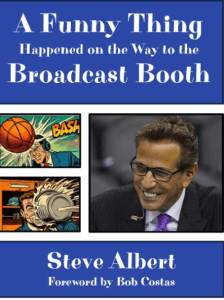
“Fighters were unlike any other professional athletes I had ever encountered,” Albert writes. “Many were products of incomprehensible backgrounds, fiercely tough neighborhoods, ghettos and, in some cases, jungles. Some got into the sport because they were bullied as children. For others, boxing was a means of survival. In many cases, it was an escape from a way of life that most people couldn’t even fathom.”
At one point, Steve recounts a ringside ritual that he followed when he was behind the microphone for Showtime Boxing: “I would precisely line up my trio of beverages – coffee, water, soda – on the far edge of the table closest to the ring apron. Perhaps the best advice I ever received from Ferdie [broadcast partner Ferdie Pacheco] was early on in my blow-by-blow career – ‘Always cover your coffee at ringside with an index card unless you like your coffee with cream, sugar, and blood.’”
Writing about the prelude to the infamous Holyfield-Tyson “bite fight,” Albert recalls, “I remember thinking that Tyson was going to do something unusual that night. I had this sinking feeling in my gut that he was going to pull something exceedingly out of the ordinary. His grousing about Holyfield’s head butts in the first fight added to my concern. [But] nobody could have foreseen what actually happened. Had I opened that broadcast with, ‘Folks, tonight I predict that Mike Tyson will bite off a chunk of Evander Holyfield’s ear,’ some fellas in white coats might have approached me and said, ‘Uh, Steve, could you come with us.'”
And then there’s my favorite line in the book: “I once asked a fighter if he was happily married,” Albert recounts. “He said, ‘Yes, but my wife’s not.'”
“All I ever wanted was to be a sportscaster,” Albert says in closing. “I didn’t always get it right, but I tried to do my job with honesty and integrity. For forty-five years, calling games was my life. I think it all worked out.”
Thomas Hauser’s email address is thomashauserwriter@gmail.com. His next book – The Most Honest Sport: Two More Years Inside Boxing – will be published this month and is available for preorder at:
https://www.amazon.com/Most-Honest-Sport-Inside-Boxing/dp/1955836329
In 2019, Hauser was selected for boxing’s highest honor – induction into the International Boxing Hall of Fame.
To comment on this story in the Fight Forum CLICK HERE
Featured Articles
Argentina’s Fernando Martinez Wins His Rematch with Kazuto Ioka
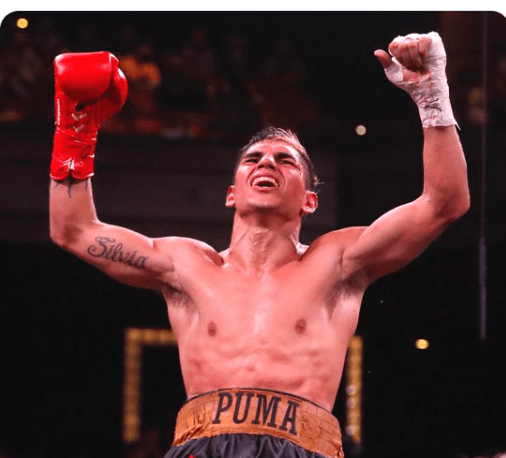
In an excellent fight climaxed by a furious 12th round, Argentina’s Fernando Daniel Martinez came off the deck to win his rematch with Kazuto Ioka and retain his piece of the world 115-pound title. The match was staged at Ioka’s familiar stomping grounds, the Ota-City General Gymnasium in Tokyo.
In their first meeting on July 7 of last year in Tokyo, Martinez was returned the winner on scores of 117-111, 116-112, and a bizarre 120-108. The rematch was slated for late December, but Martinez took ill a few hours before the weigh-in and the bout was postponed.
The 33-year-old Martinez, who came in sporting a 17-0 (9) record, was a 7-2 favorite to win the sequel, but there were plenty of reasons to favor Ioka, 36, aside from his home field advantage. The first Japanese male fighter to win world titles in four weight classes, Ioka was 3-0 in rematches and his long-time trainer Ismael Salas was on a nice roll. Salas was 2-0 last weekend in Times Square, having handled upset-maker Rolly Romero and Reito Tsutsumi who was making his pro debut.
But the fourth time was not a charm for Ioka (31-4-1) who seemingly pulled the fight out of the fire in round 10 when he pitched the Argentine to the canvas with a pair of left hooks, but then wasn’t able to capitalize on the momentum swing.
Martinez set a fast pace and had Ioka fighting off his back foot for much of the fight. Beginning in round seven, Martinez looked fatigued, but the Argentine was conserving his energy for the championship rounds. In the end, he won the bout on all three cards: 114-113, 116-112, 117-110.
Up next for Fernando Martinez may be a date with fellow unbeaten Jesse “Bam” Rodriguez, the lineal champion at 115. San Antonio’s Rodriguez is a huge favorite to keep his title when he defends against South Africa’s obscure Phumelela Cafu on July 19 in Frisco, Texas.
As for Ioka, had he won today’s rematch, that may have gotten him over the hump in so far as making it into the International Boxing Hall of Fame. True, winning titles in four weight classes is no great shakes when the bookends are only 10 pounds apart, but Ioka is still a worthy candidate.
To comment on this story in the Fight Forum CLICK HERE
-
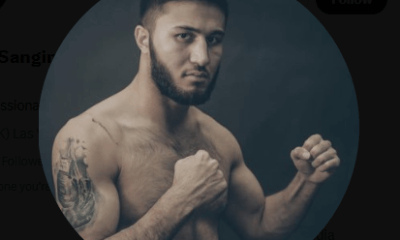
 Featured Articles4 weeks ago
Featured Articles4 weeks agoMekhrubon Sanginov, whose Heroism Nearly Proved Fatal, Returns on Saturday
-
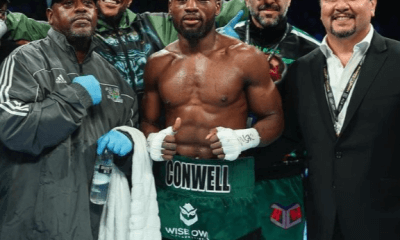
 Featured Articles4 weeks ago
Featured Articles4 weeks agoAvila Perspective, Chap. 322: Super Welterweight Week in SoCal
-

 Featured Articles4 weeks ago
Featured Articles4 weeks agoTSS Salutes Thomas Hauser and his Bernie Award Cohorts
-
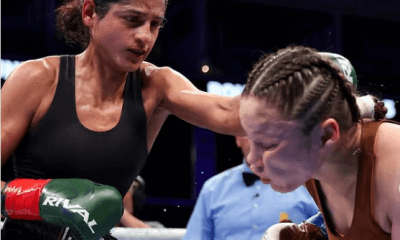
 Featured Articles4 weeks ago
Featured Articles4 weeks agoGabriela Fundora KOs Marilyn Badillo and Perez Upsets Conwell in Oceanside
-
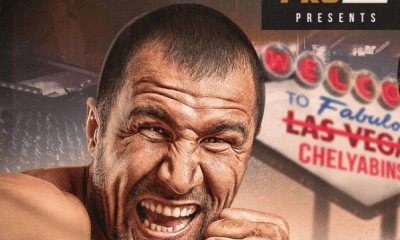
 Featured Articles4 weeks ago
Featured Articles4 weeks ago‘Krusher’ Kovalev Exits on a Winning Note: TKOs Artur Mann in his ‘Farewell Fight’
-

 Featured Articles3 weeks ago
Featured Articles3 weeks agoFloyd Mayweather has Another Phenom and his name is Curmel Moton
-
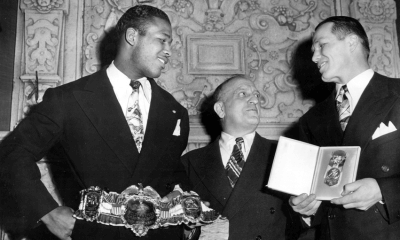
 Featured Articles3 weeks ago
Featured Articles3 weeks agoArne’s Almanac: The First Boxing Writers Assoc. of America Dinner Was Quite the Shindig
-
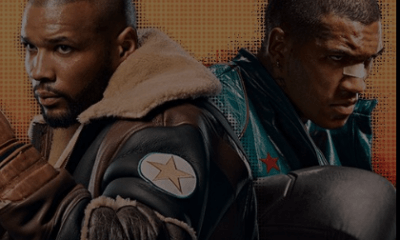
 Featured Articles3 weeks ago
Featured Articles3 weeks agoAvila Perspective, Chap. 323: Benn vs Eubank Family Feud and More
















